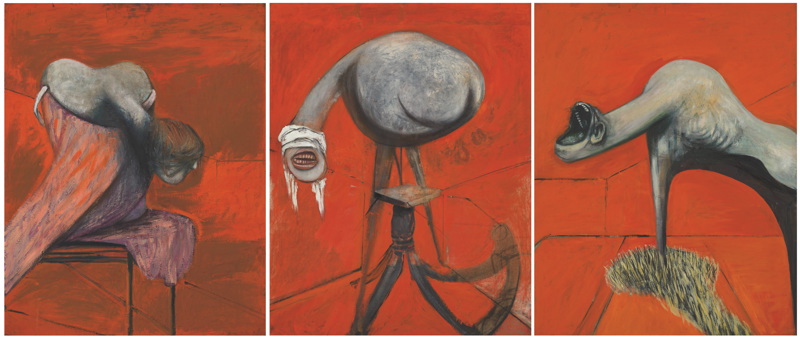Widely regarded as one of the 20th century’s leading figurative painters, Francis Bacon was also one of the most revolutionary. Born in Ireland in 1909 and working up until his death 83 years later, he was at the forefront of a movement of artists who realised photography had relieved painting of the need to serve a realistic purpose.
Granted this artistic freedom Bacon proceeded to paint raw, emotionally charged, often grossly distorted figures, yet opted to anchor them within architectural, occasionally ghost-like framing devices. And it’s this second facet of his work which Francis Bacon: Invisible Rooms promises to explore.
“The thing that’s fascinating about how he structures and frames space is that sometimes it’s this abstract thing where he’s adding something to help focus on the figure, but sometimes it’s a form which relates to actual furniture with an interesting connection to the studio he worked in,” explains Lauren Barnes, Tate Liverpool’s assistant curator. “There’s this tantalising connection to real space even if the whole thing looks to be abstracted and almost removed from reality.”
The exhibition also features a number of Bacon’s preliminary drawings, which demonstrate how the various framing techniques were planned during a painting’s nascent stage rather than simply added at the conclusion as some sort of artistic full stop. These comparatively rigid structures provide a compelling counter to the incredibly fluid nature of his figures.
“The chance, the accidental, the spontaneity within his work, something he often talked about, has led us to address within this show the dialogue there seems to be between the organic way he approached his figures and the premeditated way he framed them. It really is a marked contrast and enthralling to see.”
Bacon was initially inspired by a Picasso exhibition he visited when living in Paris during the late 1920s. Invisible Rooms – the largest retrospective of his work ever staged in the north of England – demonstrates why Bacon himself is now regarded as hugely influential on many artists. Able to reimagine stills from contemporary film while simultaneously reworking 17th century Baroque portraits within the same painting – breaking down artistic hierarchies and traditions – Bacon was a precursor to Blake and Warhol in the Pop Art movement.
Barnes describes how “the critical importance he placed on the ideas of death and isolation in a godless world can be seen in much of Damien Hirst’s work,” and how Jenny Saville has “a similar approach to Bacon with the taking apart of the body through painting.”
When viewing Bacon’s drawings and paintings, the twin themes of anxiety and alienation are never far from the forefront. Barnes talks of “the Existentialist despair that comes over in many of the canvasses.” Yet however bleak these works may be, Bacon’s importance in helping transform what the public expected from figurative painting should not be downplayed.
“His paintings really were a radical rethinking on how to present a portrait during the post-war era,” Barnes says. “And he wanted to reflect and communicate the human condition in a society changed so much by war. On that count he certainly succeeded.”
Francis Bacon: Invisible Rooms is at Tate Liverpool, 18 May-18 September
Like the Big Issue North on Facebook



Leave a reply
Your email address will not be published.